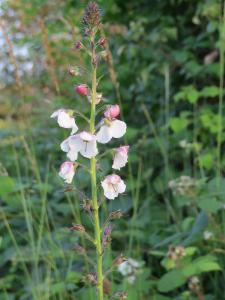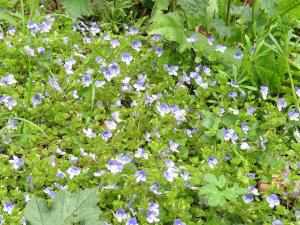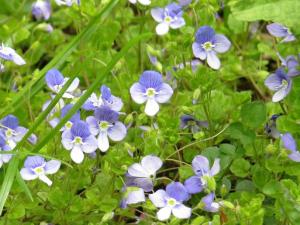Last week, I visited one of my favourite Bristol plant sites, Lamplighters Marsh. This is the strip of land between the Avonmouth railway line and the River Avon, from the M5 Avon bridge southeast to the former Lamplighters pub. It’s got a mix of habitats: lots of scrub and tall herb, one of Bristol’s few reedbeds, and areas of sparse vegetation (and the tidal Avon, a interesting site in its own right, is right next door). Here are a few photos of the site:
 |
 |
 |
 |
Among the star plants here are a large population of Viper’s Bugloss (Echium vulgare) and a small population of Moth Mullein (Verbascum blattaria), both scarce plants in the Bristol area. Viper’s Bugloss occurs in a variety of habitat types in Britain: chalk and limestone grassland, at the coast in sand dunes, on shingle or cliffs, and in disturbed open ground such as that found in disused quarries or railway lines. Although Lamplighters Marsh could be described as coastal, the habitat here is more like the last of these, and in the Bristol area, it is not really a coastal plant, although in some parts of Britain it is exactly that. My visit was on a sunny evening and many bumblebees were visiting the plants.
 |
Moth Mullein is an introduced plant. It is distinctive among the mulleins in having large flowers, and not being densely hairy or downy like many mullein species. It occurs in both white-flowered and yellow-flowered forms. It has been recorded at several other sites in Bristol, but is very scarce away from the city.
 |

